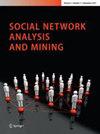Effectiveness of data augmentation to predict students at risk using deep learning algorithms
IF 2.3
Q3 COMPUTER SCIENCE, INFORMATION SYSTEMS
引用次数: 1
Abstract
Abstract The academic intervention to predict at-risk higher education (HE) students requires effective data model development. Such data modelling projects in the HE context may have common issues related to (a) adopting small-scale modelling that gives limited options for early intervention and (b) using imbalanced data that hinders capturing effective details of poorly performing students. We address the issues going beyond the distribution-based algorithm, using a multilayer perceptron classifier which shows better on confusion metric, recall, and precision measures for identifying at-risk students. Our proposed deep learning-based model, which uses data augmentation techniques to supplement the data instances and balance the dataset, aims to improve the prediction accuracy of whether the student will fail or not based on their interaction with the learning management systems to prevent struggling students from evasion.使用深度学习算法预测有风险学生的数据增强有效性
摘要高校高危学生的学术干预预测需要建立有效的数据模型。高等教育背景下的此类数据建模项目可能存在以下共同问题:(a)采用小规模模型,为早期干预提供有限的选择;(b)使用不平衡的数据,妨碍捕捉表现不佳学生的有效细节。我们解决了超越基于分布的算法的问题,使用多层感知器分类器,该分类器在识别有风险的学生的混淆度量、召回率和精度度量方面表现更好。我们提出了基于深度学习的模型,该模型使用数据增强技术来补充数据实例并平衡数据集,旨在提高基于学生与学习管理系统交互的学生是否会失败的预测准确性,以防止挣扎的学生逃避。
本文章由计算机程序翻译,如有差异,请以英文原文为准。
求助全文
约1分钟内获得全文
求助全文
来源期刊

Social Network Analysis and Mining
COMPUTER SCIENCE, INFORMATION SYSTEMS-
CiteScore
5.70
自引率
14.30%
发文量
141
期刊介绍:
Social Network Analysis and Mining (SNAM) is a multidisciplinary journal serving researchers and practitioners in academia and industry. It is the main venue for a wide range of researchers and readers from computer science, network science, social sciences, mathematical sciences, medical and biological sciences, financial, management and political sciences. We solicit experimental and theoretical work on social network analysis and mining using a wide range of techniques from social sciences, mathematics, statistics, physics, network science and computer science. The main areas covered by SNAM include: (1) data mining advances on the discovery and analysis of communities, personalization for solitary activities (e.g. search) and social activities (e.g. discovery of potential friends), the analysis of user behavior in open forums (e.g. conventional sites, blogs and forums) and in commercial platforms (e.g. e-auctions), and the associated security and privacy-preservation challenges; (2) social network modeling, construction of scalable and customizable social network infrastructure, identification and discovery of complex, dynamics, growth, and evolution patterns using machine learning and data mining approaches or multi-agent based simulation; (3) social network analysis and mining for open source intelligence and homeland security. Papers should elaborate on data mining and machine learning or related methods, issues associated to data preparation and pattern interpretation, both for conventional data (usage logs, query logs, document collections) and for multimedia data (pictures and their annotations, multi-channel usage data). Topics include but are not limited to: Applications of social network in business engineering, scientific and medical domains, homeland security, terrorism and criminology, fraud detection, public sector, politics, and case studies.
 求助内容:
求助内容: 应助结果提醒方式:
应助结果提醒方式:


